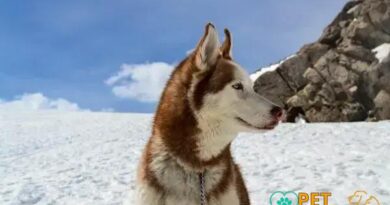What is: Zinc-rich foods for dogs
What is Zinc-rich Foods for Dogs?
Zinc-rich foods for dogs are essential dietary components that contribute to the overall health and well-being of your canine companion. Zinc is a vital mineral that plays a crucial role in various bodily functions, including immune response, skin health, and cellular metabolism. Understanding the importance of zinc in your dog’s diet can help you make informed choices about their nutrition and health.
The Importance of Zinc in a Dog’s Diet
Zinc is an essential trace mineral that dogs require for numerous physiological processes. It aids in the synthesis of proteins and DNA, supports the immune system, and promotes healthy skin and coat. A deficiency in zinc can lead to a range of health issues, including skin lesions, hair loss, and impaired immune function. Therefore, incorporating zinc-rich foods into your dog’s diet is vital for maintaining their overall health.
Sources of Zinc-rich Foods for Dogs
There are several natural sources of zinc that can be included in your dog’s diet. Meat, particularly red meat like beef and lamb, is one of the richest sources of zinc. Other protein sources such as chicken, turkey, and fish also provide significant amounts of this essential mineral. Additionally, certain grains and legumes, such as chickpeas and lentils, can contribute to your dog’s zinc intake.
Benefits of Zinc for Dogs
The benefits of zinc for dogs extend beyond just immune support. This mineral is crucial for maintaining healthy skin and a shiny coat. It also plays a role in wound healing and helps to reduce inflammation. Furthermore, zinc is involved in the production of enzymes that are necessary for digestion and metabolism, making it an integral part of your dog’s overall health.
Signs of Zinc Deficiency in Dogs
Recognizing the signs of zinc deficiency in dogs is essential for timely intervention. Common symptoms include hair loss, particularly around the eyes and mouth, flaky or scaly skin, and a weakened immune response leading to frequent infections. If you notice any of these signs, it may be time to evaluate your dog’s diet and consider incorporating more zinc-rich foods.
How to Incorporate Zinc-rich Foods into Your Dog’s Diet
Incorporating zinc-rich foods into your dog’s diet can be done in various ways. You can opt for high-quality commercial dog foods that list meat as the primary ingredient, ensuring they contain adequate zinc levels. Alternatively, you can prepare homemade meals that include zinc-rich ingredients like beef, chicken, and certain vegetables. Always consult with your veterinarian before making significant changes to your dog’s diet.
Commercial Dog Foods High in Zinc
Many commercial dog foods are formulated to meet the nutritional needs of dogs, including adequate zinc levels. Look for brands that specifically mention zinc content on their labels. Foods that contain meat as the first ingredient, along with a balanced mix of grains and vegetables, are often good sources of zinc. Always choose reputable brands that prioritize quality ingredients.
Potential Risks of Excess Zinc
While zinc is essential for your dog’s health, it’s important to be aware of the potential risks associated with excessive zinc intake. Over-supplementation can lead to zinc toxicity, resulting in symptoms such as vomiting, diarrhea, and lethargy. Always ensure that your dog’s diet is balanced and consult with a veterinarian before introducing any supplements or significant dietary changes.
Consulting with a Veterinarian
Before making any changes to your dog’s diet, especially regarding zinc intake, it is crucial to consult with a veterinarian. They can provide personalized advice based on your dog’s specific health needs, age, and activity level. A veterinarian can also help you determine the appropriate amount of zinc-rich foods to include in your dog’s diet to ensure optimal health.



